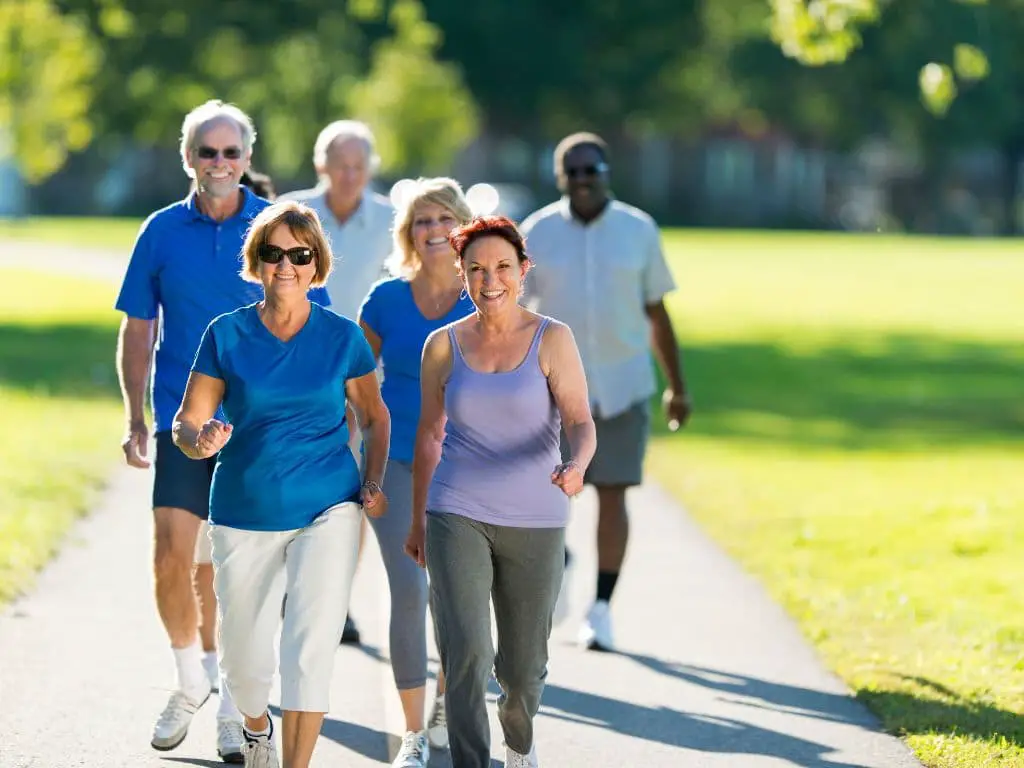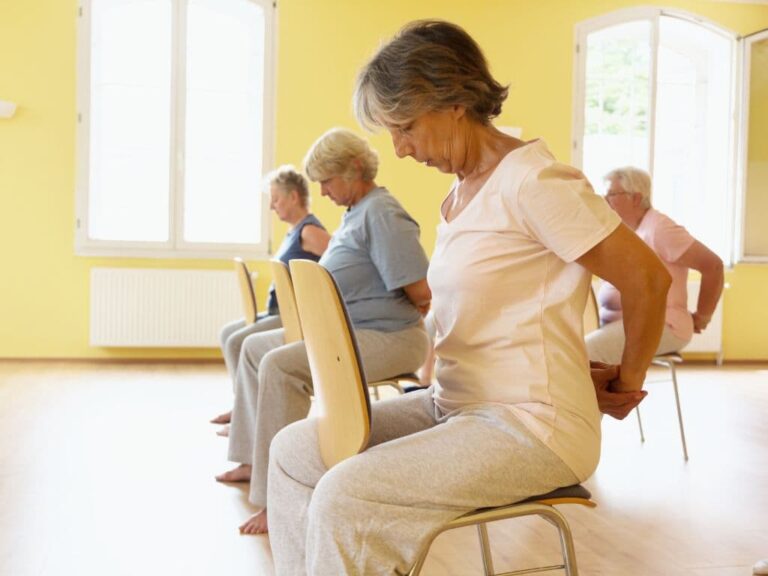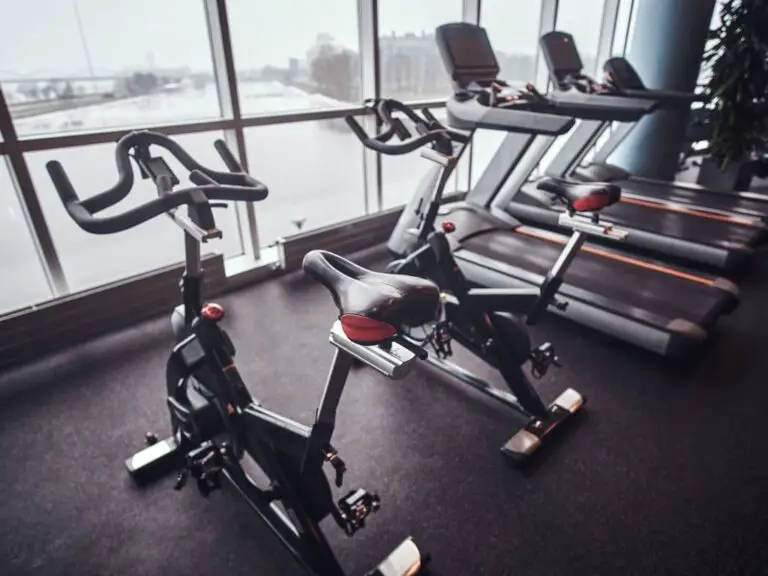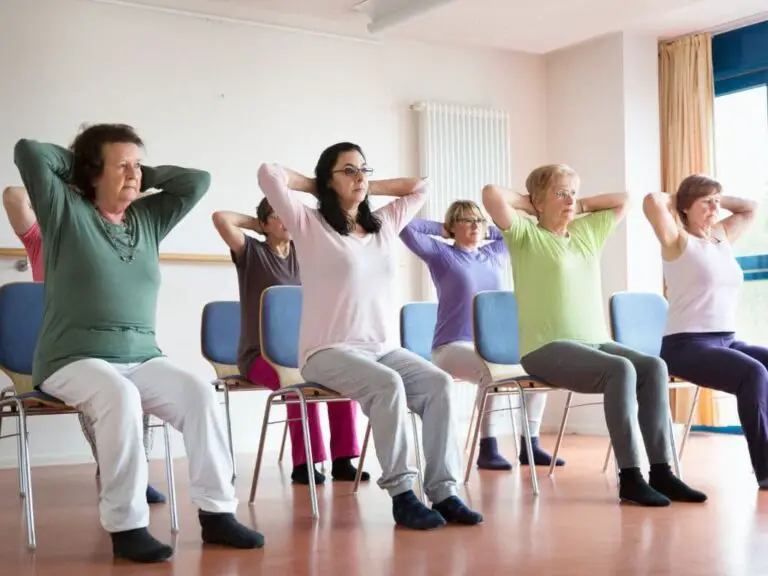What Is a Good Distance to Walk Everyday?
Walking is a great form of moderate-intensity exercise for senior citizens that can improve their cardiovascular health, mental health, balance, coordination, and gait. It’s a low-impact, easy activity that doesn’t require any special equipment or gym membership.
But what is the ideal brisk walking distance for seniors to cover each day to get the health benefits?
A good walking distance for seniors varies by age. For those aged 50-64 years, 3-4 miles is recommended daily, while seniors aged 65-79 are advised to aim for 2-3 miles. Those aged 80 and above should start with 1-2 miles. The goal is regular activity to maintain health and independence.
The answer may depend on factors like your current fitness level, flexibility, endurance, and goals. If you’re just starting out, aim to walk at a comfortable pace for 30 minutes on most days of the week.
This can be broken up into 10-minute walking sessions if that’s more doable at first. As your strength, stamina and balance improve, gradually increase the length and intensity of your walks until you can walk briskly for 60 minutes at a time on most days.
Walking has many benefits for senior health. It can improve heart health, blood pressure, bone density, mental acuity, balance, coordination, and flexibility. Going for daily walks also reduces stress levels and encourages social interaction if you walk with friends.
But be sure to wear supportive footwear to prevent common walking injuries like shin splints, strained calves, and sprained ankles. Start slow on level terrain before progressing to more challenging routes.
Getting just 30-60 minutes of moderate walking in per day can make a big difference for seniors’ mobility, independence, and quality of life. So lace up those sneakers and start moving – your body will thank you!

How Much Exercise Should Seniors Get Every Day?
Getting regular physical activity is vital for senior citizens to maintain their health, fitness, balance, coordination, and quality of life. But how much exercise should seniors aim for each day?
Experts recommend seniors get at least 30 minutes of moderate-intensity aerobic activity, such as brisk walking, swimming, or cycling, on most days. This type of cardio exercise can provide cardiovascular benefits, improve gait and endurance, and support mental acuity.
Seniors should also incorporate muscle-strengthening activities 2 days per week to maintain strength and function. Things like yoga, Pilates, and resistance band workouts can help. Balance exercises like tai chi are also recommended at least 3 days per week to reduce seniors’ risks of falls and injuries.
Getting moving with activities like walking, joining exercise classes tailored to seniors, or even doing household chores can help seniors stay active. The benefits include supporting bone density, reducing blood pressure, improving flexibility and balance, boosting mood and mental sharpness, maintaining independence, and extending longevity.
Walking is a great way to start – it can be done at various intensities to meet seniors’ needs. Check local parks, malls, or recreation centers for indoor walking options. Staying active provides physical and mental rewards that can improve seniors’ health and quality of life.
But how far should you aim to walk each day? The ideal distance can vary based on your age and fitness level.
For adults ages 50-64, experts recommend working up to walking 3-4 miles per day at a brisk pace. This provides cardiovascular benefits and supports muscle and bone strength. Those ages 65-79 may aim for 2-3 miles daily. And seniors 80+ can start with a goal of 1-2 miles per day.
If you’re new to exercise, build up slowly from 10-15 minute walks to avoid injury. Here’s a quick reference for recommended senior walking distances by age:
| Age Range | Recommended Daily Walking Distance |
|---|---|
| 50-64 years | 3-4 miles |
| 65-79 years | 2-3 miles |
| 80+ years | 1-2 miles |
The key is to start where you’re at and steadily increase time and distance. Walking just 10-30 minutes daily can make a big impact. Work your way up in duration and pace. Go at your own speed and remember that any movement is better than none.
Stay hydrated, use good footwear, and walk with others for safety and motivation. Moving more supports healthy aging.
What Are the Benefits of Walking for Seniors?
Walking is an excellent form of exercise for senior citizens. Getting daily physical activity through brisk walking offers many benefits for seniors’ health, fitness, mood, and quality of life.
Here are some of the top benefits of walking for seniors:
- Improves heart health by lowering blood pressure, cholesterol, and risk of heart disease and stroke
- Reduces risk of diabetes by improving blood sugar control
- Supports weight management by burning calories and body fat
- Strengthens bones to prevent osteoporosis and risk of fractures
- Eases joint pain from arthritis and osteoarthritis
- Improves balance and coordination to prevent falls and injuries
- Increases muscular fitness and endurance
- Enhances flexibility and range of motion
- Reduces stress, anxiety, and depression by releasing feel-good endorphins
- Boosts mood and mental sharpness
- Promotes better sleep quality and duration
- Encourages social interaction when walking with others
- Provides enjoyment and mental stimulation from being outdoors
Amount of Walking for Seniors
Experts recommend seniors get at least 30 minutes of brisk walking most days of the week. Those who are able, can work up to 60-90 minutes daily for maximum benefits.
Tips for Seniors to Start Walking
- Start slowly and work up to brisk pace
- Use good footwear for comfort and injury prevention
- Walk with others for safety and motivation
- Bring water to stay hydrated
- Walk indoors at mall or gym on bad weather days
- Join a senior walking club in your area
Walking is free, easy, and has so many physical and mental rewards for senior health and wellbeing. It’s never too late to start moving!
The Best Exercises for Seniors to Stay Fit and Healthy
Staying physically active is vital for seniors to maintain their health, independence, and quality of life. The right types of exercise can help improve seniors’ fitness, strengthen their muscles and bones, enhance balance, and prevent falls and injuries.
Here are some of the top recommended exercises for seniors:
- Walking – Low impact, easily adjusted pace and distance. Improves heart health and endurance.
- Swimming – Non-weight bearing and gentle on joints. Works all major muscle groups.
- Cycling – Fun cardio option, either stationary or outdoor. Strengthens lower body.
- Yoga – Improves flexibility, balance, and posture. Modify poses as needed.
- Tai Chi – Promotes concentration, balance, and controlled movements. Lowers stress.
- Dancing – Fun way to improve coordination, balance, spatial awareness, and cardio fitness.
- Strength Training – Use resistance bands, light weights, or bodyweight to maintain muscle mass. Try bicep curls, squats, leg lifts.
- Stretching and Balance Exercises – Yoga, Pilates, seated stretches. Tai Chi helps prevent falls.
Guidelines for Physical Activity for Older Adults
Regular physical activity provides many benefits for older adults, including improved health, quality of life, and ability to function independently. But what are the recommended guidelines for seniors?
According to the USDA, the key guidelines for older adults are:
- Get at least 150 minutes per week of moderate-intensity aerobic activity like brisk walking, swimming, or cycling. This can be broken into sessions of 10+ minutes.
- Add muscle-strengthening exercises using resistance bands, weights or body weight at least 2 days per week. This helps maintain muscle mass.
- Include balance training like Tai Chi or yoga on most days to help prevent falls.
“Older adults should aim for at least 150 minutes per week of moderate-intensity aerobic activity, plus muscle-strengthening and balance training.” – USDA Dietary Guidelines
“Exercise can help prevent and manage chronic diseases that often affect older adults, including high blood pressure, heart disease, type 2 diabetes, arthritis, and anxiety/depression.” – Mayo Clinic
It’s important for older adults to stay active as they age. Start slowly, focus on safety, and consult your doctor before beginning any new exercise program. Following the guidelines can help seniors maintain health and independence.
Exercise Guidelines for Seniors
- Aim for 150 minutes per week of moderate intensity aerobic activity
- Add muscle-strengthening exercises 2-3 times per week
- Include balance training 3 times per week
- Focus on good form and go at your own pace
- Warm up and cool down before and after exercising
Consult your doctor before starting any new exercise program. Start slowly and focus on enjoyment as you improve your fitness and health.
How Can Seniors Add More Exercise to Their Daily Routine?
Getting regular exercise provides many health benefits for seniors, from improving heart health to reducing fall risk. But how can you incorporate more physical activity into your daily routine? Here are some tips:
Aerobic Exercise
- Go for a brisk 30-60 minute walk every day
- Try swimming laps or aquatic aerobics 2-3 times a week
- Ride a stationary bike while watching TV
- Try seated aerobics or dancing videos
Strength Training
- Use resistance bands or light weights 2-3 days a week
- Do yoga, Pilates, or Tai Chi to build strength
- Work in exercises like squats or sit-to-stands throughout the day
Lifestyle Activities
- Take the stairs when possible
- Park farther away to walk more
- Work in the garden or do household chores
- Go on guided walking tours when traveling
Tips for Staying Motivated
- Find activities you enjoy and switch it up
- Exercise with a friend or group for support
- Track your progress to see improvements
- Focus on how exercise improves energy, sleep, mood
Consult your doctor before starting any new exercise program. Start slowly, be safe, and find ways to make physical activity a regular part of your day.
Frequently Asked Questions
-
What is a good distance to walk everyday?
Walking, a low-impact and moderately intense exercise with few risks, has many health benefits. The CDC suggests that adults walk 10,000 steps daily. For most, this would be equivalent to approximately 8 km or 5 miles.
-
Should seniors do sit ups?
Sit-ups or crunches used to be the best moves for keeping your core strong in the past. These exercises may not be as efficient as they once were. These exercises strengthen only certain muscles and pose risks to older people. Boehm states that they are dangerous as you pull on your neck.
-
Why do old people lose weight?
People age with muscle atrophy and loss of bone density. The body’s water content is also affected by the loss of tissues. This can lead to weight loss, which may not be obvious but should not alarm you.
-
What is good for energy for seniors?
Oatmeal and whole-grain cereals are high in fiber, which helps you feel fuller longer. These cereals and oatmeal are rich in vitamins, minerals, which should all be part of senior nutrition. Fish. Excellent examples of lean protein that boosts energy for older people include seafood and fish.
-
Is walking daily enough exercise?
Is walking enough to be healthy? Short answer: Yes. According to Laura Goldberg MD, University Hospitals pediatric sport medicine specialist, walking is as effective as any form of exercise. Guidelines are to do 150 minutes of moderate exercise per week and 75 minutes of vigorous activities each day.
-
How much exercise does an 80 year old need?
If you’re already active, aim to do 150 minutes or more of moderate activity per week. 75 minutes or more of vigorous intensity exercise if possible. Reduce the amount of time you spend sitting down or lying down, and replace long periods of inactivity with something.
-
Should seniors do squats?
All ages can benefit from the squat. It’s a great exercise for older people to preserve or even increase muscle mass. All the muscles of your lower body (including your core) are engaged during the squat.
-
What happens if you do push-ups everyday?
Do pushups daily have many benefits. Pushups can be beneficial in building strength and upper body strength. These exercises work your shoulders, pectoral, and triceps muscles. If done correctly, they can strengthen your lower back and core.
-
What makes a face look older?
SPF protects the skin against premature aging. A past study showed that UV (UV) exposure is responsible for 80 per cent of visible signs of facial aging, such as wrinkles and pigmentation shifts.
-
How long should a 70 year old exercise?
Adults 65 years and over need to exercise at least 150 minutes per week. This could be 30 minutes each day or 5 days a weeks of walking, for example. They also need to do 75 minutes per week of intense activity like running, jogging or hiking. A minimum of 2 days per week should be spent engaging in activities that help strengthen the muscles.







